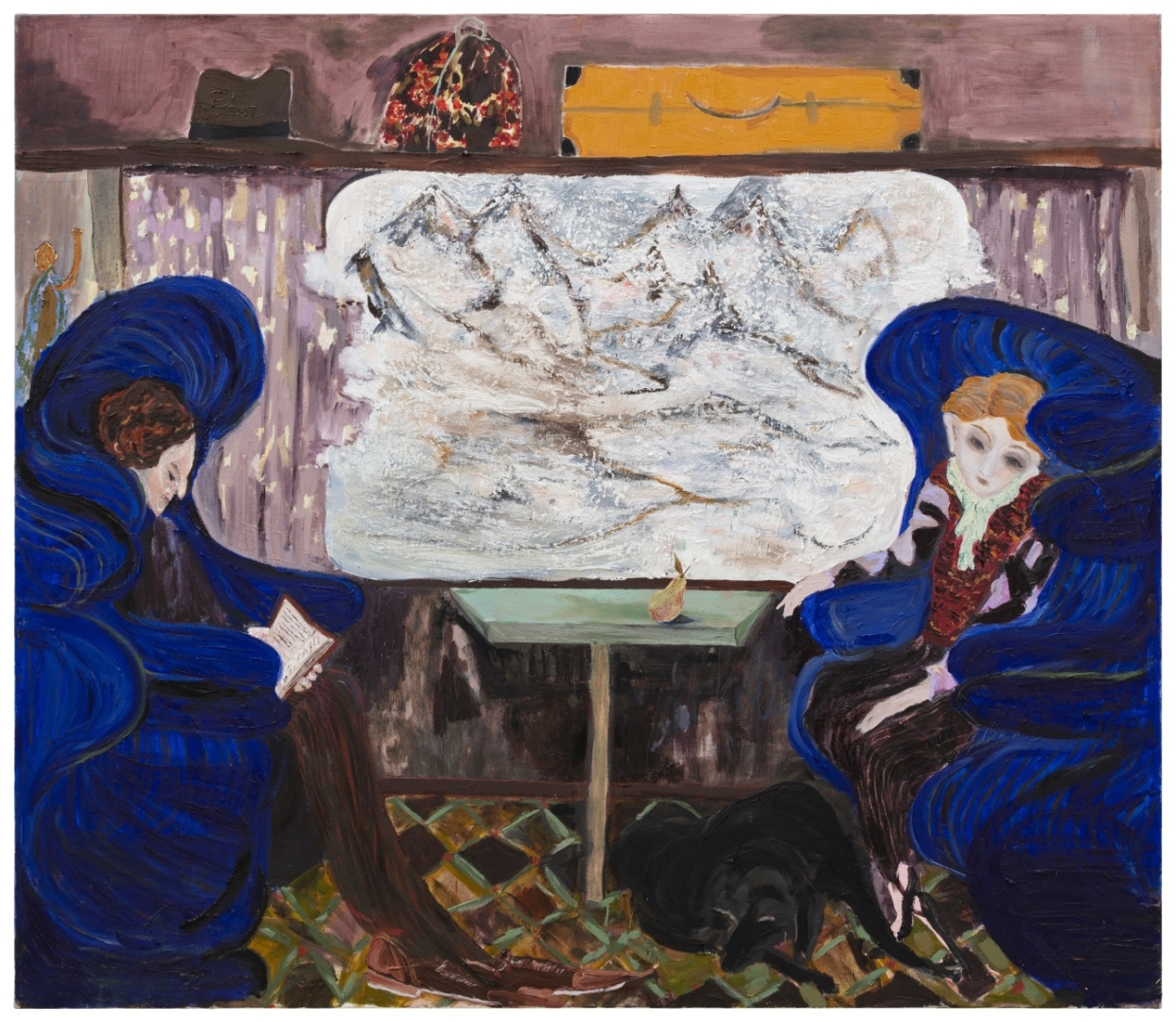Drawing on art history is a defining aspect of Peura’s practice. Her paintings are rich with symbols and visual worlds that weave together historical events and realms of myth. At times, these allusions are immediately recognizable; at others, they appear only as subtle traces – such as an echo of the starry sky painted on the dome of the sacristy of San Lorenzo in Florence, which embodies the worldview of the Middle Ages and the Renaissance, or a nod to Leonora Carrington’s The Giantess (1947), a vision of gentle, feminine power. In contemplating Peura’s work, one senses its deep connection with the continuum of art history – yet her imagery remains unmistakably her own, charting a singular creative path.
Peura’s process often begins with a faint, unformed idea that may shift and transform many times as the work evolves. For her, painting is a journey of discovery – an open field of technical and expressive exploration.
Her work unfolds through a quiet slowness, as she coaxes a fleeting intuition into visible form, long before it finds either shape or words. Painting, for Peura, is ultimately a mode of communication – a language composed of layered color and pigment, their interactions, and the subtle variations of each brushstroke. It also embodies time itself: every layer remains visible, and no trace can be undone.
Eeva Peura (b. 1982) graduated in painting from the Finnish Academy of Fine Arts in 2011. She has presented her work in numerous solo and group exhibitions in Finland, including at the Mänttä Art Festival and the Turku Art Museum. In 2019, she received the William Thuring Prize. Her works are held in several major Finnish collections, among them the Museum of Contemporary Art Kiasma, the Turku Art Museum, and the Vantaa Art Museum Artsi.




